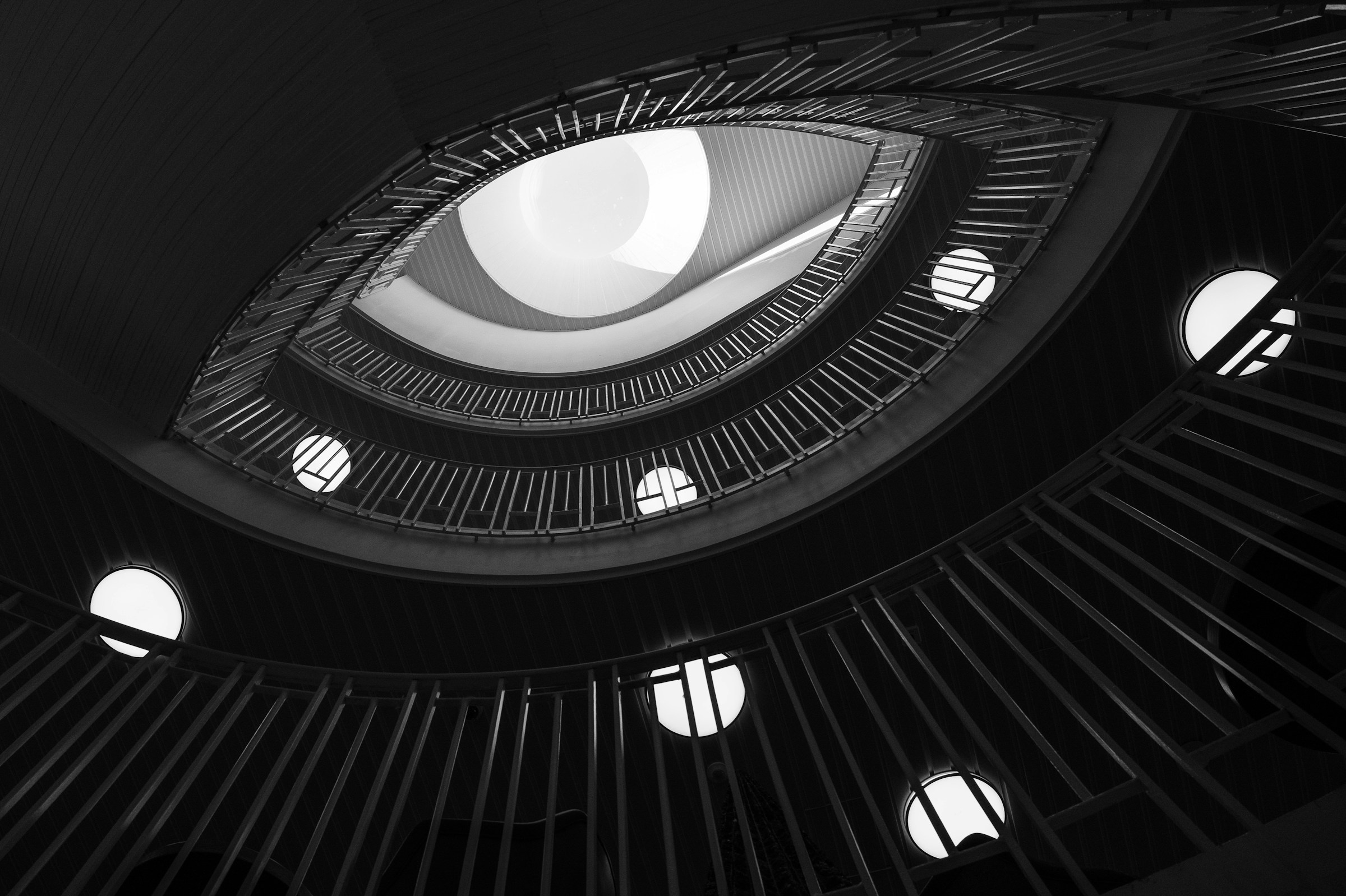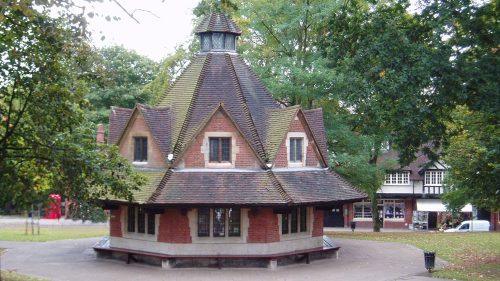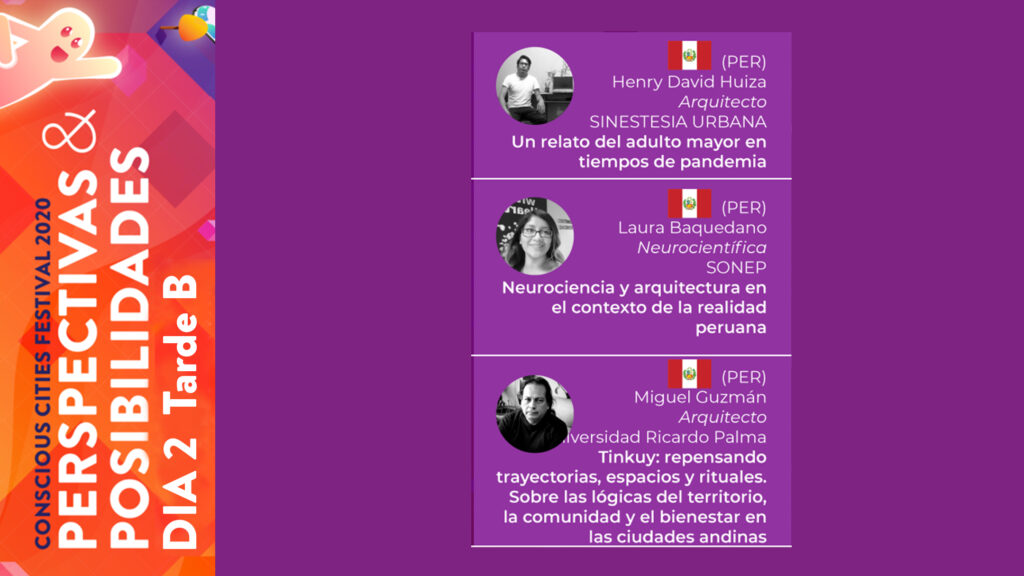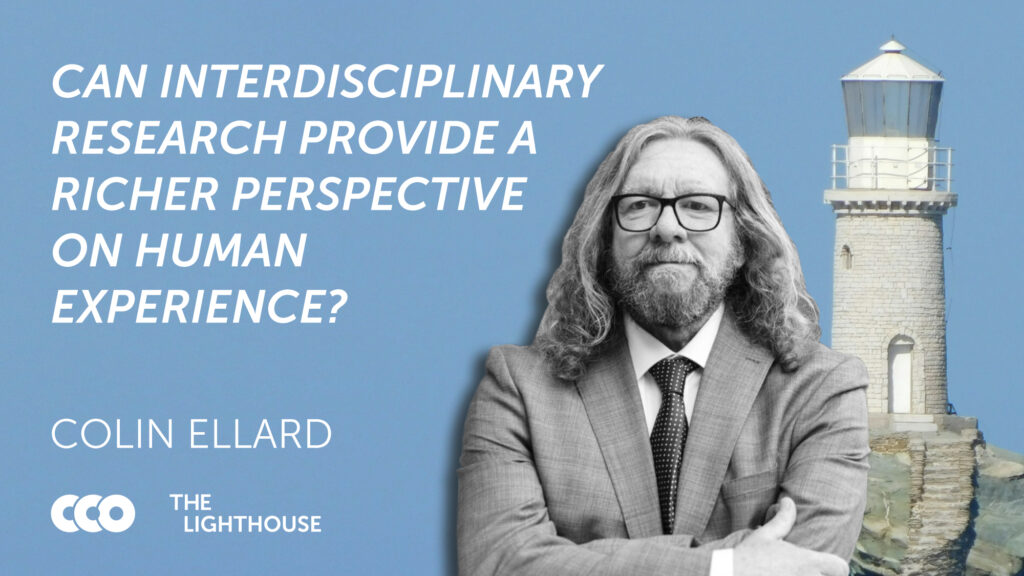Architecture is in the world, but it also is the world that influences our mind and plays an important role in people’s cognitive processes. In our attempt to understand architecture1, we break apart the link between body-mind-world2. However, the problem lies beyond the separation of components: studying the link might fail due to our inability to define the boundaries between body, mind and world. In particular, the mind appears to extend into the world (environment) throughout the experience of creating and inhabiting architecture. Understanding architecture as extension of the mind allows for the vindication of the body-mind-world relationship as the comprehension of each component, their interaction and boundaries becomes necessary in order to create conscious cities.
I: Finding the Pieces
Where does architecture start, and where does it end (in case it does)? Architecture begins as an activity during the design process, but once it turns into a thing (a building), architecture becomes the object of experience for people who dwell in it. Through the whole process, “the connection with architecture is actively sought, and is an inherent component of our human nature and constitutive element of our cognition and consciousness”3. This is evident as architecture goes from the mind to the body and into the environment, in a recursive loop.
Since experiences are at the core of architecture, subjectivity is impossible to avoid. Therefore, it is essential to understand the experience and its structure in a disciplined manner. An initial moral is that first-person (phenomenology) and third-person sciences (neuroscience) should work together to study experiences, as posited by Francisco Varela with neurophenomenology4. Neurophenomenology could benefit the study of experiences which are hard to define and communicate, such as the ones related to architecture, and design in general.
Given that architecture has a twofold nature5, neurophenomenology could help us elucidate the relevance and scope of each component of mind-body-world through the experience of designing and dwelling. On the one hand, if we consider architecture to be an activity, something (not only) architects do6, then we should study its design process. If that process in particular is that which augments the building and turns it into architecture then, it should be examined properly. Moreover, if the user experiences a building that she labels architecture, then such experiences must be examined too. On the other hand, If we take architecture as a thing, then we should study the spatial configurations that, in principle, could correlate with the experiences during both designing and inhabiting architecture.
Phenomenology can help us find the invariants that correspond to architectural experience. In short, phenomenal invariants are patterns that lie at the essence of a particular experience. For example, every time someone inhabits the Glass House of Philip Johnson, which has a spatial configuration Z, that someone experiences the invariant X. However, the invariant alone does not work. Being the result of a phenomenological study, the invariant should gain validity from neuroscience. Once validated, we can argue that a particular pattern of neural activity has arisen too. Following our example, everytime someone inhabits a spatial configuration Z, that someone experiences the invariant X, which in turn, correlates with a neural pattern N.
A second lesson is that the study of architecture must recognize that the experiential invariant X (the mind), the neural pattern N (the body), and the spatial configuration Z (the world or environment) work together, constraining and validating each other in the process. Furthermore, each component seems to take up the function of one another during the experience of architecture, whether it is something we do (a thing) or something we live (an activity). This appears to happen since the beginning of the process of creating architecture, where body and environment function as extensions of the mind.
Neurophenomenology appears to be an important non-reductive way to study (the experience of) architecture, and understand the mind-body-world relationship as well as its boundaries. Moreover, neurophenomenology allows us to find the correlations7 between components in a rigurous manner, given that “the nervous system, the body and the environment are highly structural dynamical systems, coupled to each other in multiple levels.”8 Architecture needs an interdisciplinary approach that includes first-person experience, and neurophenomenology can light that way.
II: From Mind to Paper
Let’s go back in time. Philip Johnson has been mesmerized by Mies van der Rohe’s Farnsworth House and he wants to design something that pays homage to it. He has many ideas about how he wants it to be like, but they are all incomplete. Philip can not design the Glass House entirely in his head. Somehow, he knows it. That is why he rushes to his desk and opens a drawer. Philip takes pen and paper, and starts drawing.
Probably, that must have been the beginning of the Glass House and many other designs. Our imagination and intelligence have limitations, and can not progress unless we support them. In our example, Philip resorts to pen and paper to fill in the gaps left by the design he initially conceived in his head. Such support is what Andy Clark calls external scaffolding9. He argues that “we may often solve problems by “piggybacking” on reliable environmental properties”. Then he adds that “the intuitive notion of scaffolding is broader, however, since it can encompass all kinds of external aid and support whether provided by adults or by the inanimate environment”. Clark’s idea of scaffolding is reflected in his 007 Principle:
In general, evolved creatures will neither store nor process information in costly ways when they can use the structure of the environment and their operations upon it as a convenient stand-in for the information-processing operations concerned. That is, known only as much as you need to know to get the job done.10
This principle emphasizes the relationship between organism (body) and environment (world), which we tend to break or forget. In the same vein, Richard Lewontin mentions that “the environment is not a structure imposed on living beings from the outside but is in fact a creation of those beings. The environment is not an autonomous process but a reflection of the biology of the species. Just as there is no organism without an environment, so there is no environment without an organism.”11
To prove both the idea of scaffolding and the 007 Principle, Clark shows examples that we can relate to the experience of creating and inhabiting architecture. Just like the case of designing (architecture), let it be the Glass House or any other thing, there are levels of complexity that urges us to look for support in order to complete the task:
Most of us, it is argued, can learn to know at a glance the answers to simple multiplications, such as 7 x 7 = 49. (…) But longer multiplications present a different problem. Asked to multiply 7222 × 9422, most of us resort to pen and paper (or a calculator). What we achieve, using pen and paper, is a reduction of the complex problem to a sequence of simpler problems beginning with 2 × 2. We use the external medium (paper) to store the results of these simple problems, and by an interrelated series of simple pattern completions coupled with external storage we finally arrive at a solution.12
Clark concludes: “this is real symbol processing and, we are beginning to think, the primary symbol processing that we are able to do. Indeed, on this view, the external environment becomes a key extension to our mind.”13 This conclusion should not be taken lightly. Only that which helps fulfill a cognitive task is a candidate to be an extension of the mind. In the example, both pen and paper facilitated the task of doing a complex multiplication. Similarly, pen and paper helped Philip Johnson bring forth his ideas and design the Glass House.
However, artifacts, equipments or appliances alone are not mind extensions unless they take part of the feedback loops and iterative cycles which are proper of a cognitive process. A conversation between Richard Feynman and the historian Charles Weiner illustrates this point. Feynman reacted unexpectedly when Wiener said that his recently dated scientific notes were “a record of the day-to-day work”:
“I actually did the work on the paper,” he said.
“Well,” Weiner said, “the work was done in your head, but the record of it is still here.”
“No, it’s not a record, not really. It’s working. You have to work on paper, and this is the paper. Okay?”14
Clark’s conclusion to this exchange is just as sharp as Feynman’s answer, leading to the argument that the mind leaks and extends into the environment:
Feynman’s suggestion is, at the very least, that the loop into the external medium was integral to his intellectual activity (the ”working”) itself. But I would like to go further and suggest that Feynman was actually thinking on the paper. The loop through pen and paper is part of the physical machinery responsible for the shape of the flow of thoughts and ideas that we take, nonetheless, to be distinctively those of Richard Feynman. It reliably and robustly provides a functionality which, were it provided by goings-on in the head alone, we would have no hesitation in designating as part of the cognitive circuitry.15
A third lesson is that the mind is not brain-bounded or skull-bounded. If we consider parts of our body as tools that help us complete our tasks, we could argue that the mind extends through our body. John Dewey mentions that “hands and feet, apparatus and appliances of all kinds are as much a part of it [thinking] as changes in the brain. Since these physical operations (including the cerebral events) and equipments are a part of thinking, thinking is mental, not because of a peculiar stuff which enters into it or of peculiar nonnatural activities which constitute it, but because of what physical acts and appliances do: the distinctive purpose for which they are employed and the distinctive results which they accomplish.”16 In sum, there is an embodied mind that plays a role in cognitive processes.
The mind is not skin-bounded, either. It leaks and extends into the environment. The use of pen and paper for designing or doing multiplications are not examples chosen arbitrarily. Human beings, and in fact, all organisms, make the most of the specific features of the environment where they live and evolve. Take the simple sponge17, which feeds by filtering water, exploits the structure of its natural physical environment to reduce the amount of actual pumping it must perform: it orients itself so as to make use of ambient currents to aid its feeding.
Similarly, when we design architecture, we use the environment and its features as scaffolding in order to diminish the cognitive load required for a particular task. For that purpose, we use appliances or artifacts that are in the environment to help us out. That is how things worked for Philip Johnson when designing the Glass House, using pen and paper to prove and complete ideas that otherwise would have been stuck and forgotten in his head.
Contrary to what some philosophers think, the pen is more than just a mere functional bridge: it is an integral part of thinking and imagining. The pen molds and alters such processes while allowing us to communicate and expand our thoughts in the paper. The first line that we draw forges new thoughts and changes previous ones. Subsequent lines continue that exchange. This is what Clark calls continuous reciprocal causation18, which follows Maurice Merleau Ponty’s idea of synergy between organism and world.19
A fourth lesson is that the environment is an integral part of cognitive processes, which includes creating and experiencing architecture. Mind, body and environment form the structure with which we think, imagine, design. Neglecting one of the components puts in danger our understanding of architecture. Studying the mind-body-environment link as a whole is essential, in spite of any methodological issue.
III: From Paper to The World
Philip Johnson has finished the design stage of the Glass House. During that stage, his mind, in its brain-bounded format, did not suffice to carry out the task of creating architecture. Philip had to use his body and complementary tools, such as pen and paper to complete his design. To Philip, those elements who supported him during the design stage were extensions of his mind.
What happens once architecture takes a physical form as an edifice? During the design stage, the body, pen and paper worked as extensions of the mind. Now architecture as an edifice takes part of the environment and thus works as extension of the mind in three distinct situations: identity shaper, body-mind healer or body-mind enhancer.
Architecture as identity shaper relate, for the most part, to its cultural impact. In this perspective, meaning is a crucial concept, right from the moment architects conceive their design, to how people use and feel about the space they inhabit. Architecture is meaning embodied20, it carries a history created by a particular lived experience. Moreover, it reflects our essentialist nature21, that is, the pleasure we get from the things that we like comes from the essence that pervades those things. Our preferences forge our identity. For example, we would buy a house because our favorite artist lived there, or spend every Sunday morning in a park because it reminds us of the time we met our spouses.
For architecture to be body-mind healer, knowledge of our biology is necessary, in particular about the diseases that affect the people who will inhabit that architecture. There is a lot of progress in this area as it proves, for example, research about the effects of architecture on dementia22. Architecture already has the power to complement medical therapy for people who suffer from cognitive diseases such as Alzheimer. In this case, architecture, which is now the environment, function as external memory:
Consider the case of patients with advanced Alzheimer’s Disease. Many of these patients live surprisingly normal lives in the community, despite the fact that standard assessments of their capabilities suggest that many such patients should be incapable of surviving outside of special-care institutions. The key to such surprising successes, it seems, lies in the extent to which the individuals rely on highly structured environments which they create and then inhabit. These environments may incorporate multiple reminding notices around the house and strict adherence to specific routines. One patient virtually lives on a couch in the center of her apartment, since this provides a vantage point from which she can visually access the location of whatever she needs—this really is a case of using the world as external memory.23
Whereas architecture that plays the role of body-mind healer takes care of people who suffer from diseases, architecture as body-mind enhancer concerns about healthy people willing to transcend their original capacities. Instead of accessories that adhere to people’s bodies, architecture could enhance people’s capacities without being intrusive.
Cellphones, for example, have become the repository of information we do not (care to) remember anymore because they can do that better and faster than us24. The release of cognitive load and space we used to need to memorize numbers and birthdays could go on to benefit other cognitive tasks. Architecture can do the same as our cellphone and so much more. What if we design to reduce the user’s cognitive load and help her remember grocery lists, birthdays, childhood memories? What if we design in ways that make architecture function as a real-scale memory palace?25
In these three situations, architecture is an extension of the mind since it functions as integral part of cognitive processes. We could deduce such conclusion, following the Parity Principle established by Andy Clark:
If, as we confront some task, a part of the world functions as a process which, were it done in the head, we would have no hesitation in accepting as part of the cognitive process, then that part of the world is (for that time) part of the cognitive process. Cognitive processes ain’t (all) in the head!26
Instead of being a mere functional coupling, the relationship between architecture and human organism is that of a causal coupling, in which “the human organism is linked with an external entity in a two-way interaction, creating a coupled system that can be as a cognitive system in its own right.”27
In the first situation, architecture is meaning embodied. It becomes part of who we are, it forges our identity. In a way, it is like a limb, that even if amputated, we still can feel. In the second situation, architecture help people perform tasks that in their conditions could not pull on their own. Alzheimer is an example, but architecture could become a complementary tool to treat or heal patients who suffer other diseases. In the third situation, architecture is our way to become cyborgs without having any kind of apparatus inserted in our body. Therefore, architecture is a way to enhance our capacities and upgrade ourselves.
In the three cases, architecture is an extension of the mind given that our mind leaks into the environment in distinctive ways. The memory examples are the easiest way to comprehend this. Just like pen and paper were integral part of the cognitive process of Philip Johnson to imagine and create the Glass House, architecture can be integral part of the cognitive process for someone with Alzheimer’s disease or someone who wants to remember a story to tell her guests.
Full Circle
It’s time to put all the pieces together, although they were never apart. The integration of Part I, II and III emphasizes both the benefits and the difficulties to study architecture within the link mind-body-environment:
- Neurophenomenology can support the study of architectural experience in order to validate and produce knowledge; particularly, through the disclosure of correlations between mind, body and world (architecture). However, since these components require to be studied as a whole, and with a transdisciplinary approach, the study posits a hard problem. In a previous article28, I argued that we should create a metalanguage to comprehend the different factors inherent to architecture. Considering both first-person and third-person science in the study of architecture is a must.
- There is no way to study architecture by separating its double nature: the creation and the experience of its creation, the thing and the activity. First, architecture is an activity that begins with the mind of the designer delving into the world with support of external scaffolding. Once a thing, architecture becomes the world and an extension of the mind for people as it allows them a wide range of possibilities to enhance their cognitive capabilities and improve their health.
- There are, as we could expect, ethical concerns. Particularly, it seems that we expect more from technology29 –including that which creates, influences and takes part of architecture– than we do from ourselves. Take cellphones: we trust them almost blindly although they could get lost or hacked. We could make ourselves so dependant on technology that, in contrast to what happens to people with amputated limbs, whose brain changes its structure by relocating the space occupied of the lost limb in the nearest brain areas,30 the danger is reducing or losing our cognitive abilities.
There is still a long way for architecture to progress as it should. Conscious cities need conscious architecture, which in turn could benefit from taking the extended mind as a theoretical approach and neurophenomenology as a methodological remedy. We must use these ideas to design according to first principles: the experience of architecture is fundamental and architecture trascends its physical embodiment and becomes a part of our minds and cognition. This is a recursive, never-ending story about three inseparable pieces: body, mind and architecture. Let’s begin.
References
- It is the way science works that sometimes gets in the way to capture the nature of things. Christopher Alexander writes in the Nature of Order (2003): “I do not, directly, blame all the architects who have made these buildings in so many places on earth. I believe it is inappropriate to feel anger towards them (…) Rather, I believe that we must acknowledge that the architects (often our own colleagues) who drew these buildings, and then had them built by methods and processes far from their control, deserve our sympathy for being placed in an impossible position. What has caused the new tradition of structure-destroying forms of this era, are mainly the machine-like processes of planning, conceiving, budgeting, developing, construction contracting, construction labor, and so forth. The architects who fully accepted the modern machine have hardly been more than pawns in the game which is much larger than they are.”
- In Steps to a Science of Interbeing (1999), Francisco Varela explains: “We tend to think that the mind is in the brain, in the head, but the fact is that the environment also includes the rest of the organism (…) It makes the whole thing into an extremely tight unity (…) Our minds are, literally inseparable, not only from the external environment, but also from what Claude Bernard already called the milieu interieur.” For a deep understanding of the link, see also Varela, Thompson & Rosch’s Embodied Mind: Cognitive Science and Human Experience (1991).
- Jelic, A. (2015). Designing pre-reflective architecture: Implications of neurophenomenology for architectural design and thinking. Retrieved from http://ambiances.revues.org/628
- For an introduction to neurophenomenology, see Antoine Lutz and Evan Thompson in their Neurophenomenology: Integrating Experience and Brain Dynamics in the Neuroscience of Consciousness (2003). Also important is Varela’s Neurophenomenology: A Remedy for the Hard Problem (1999).
- Jelic, A. (2015). Designing pre-reflective architecture: Implications of neurophenomenology for architectural design and thinking.
- The idea that architects are the only ones who produce architecture is challenged by Bernard Rufosky in Architecture without Architects: A Short Introduction to Non-pedigreed Architecture (1964).
- The experience of inhabiting the Glass House of Philip Johnson relates the experiential invariant X, the neural pattern N, and the spatial configuration Z, but this does not assume that they have sufficient causal power to generate each other. The dangers of causal oversimplification are around the corner. In that sense, we should avoid making inferences such as X → N, X ↔ Z, or N → Z. By now, there only is a correlation between X, N and Z. How strong that correlation is depends on the findings through disciplined and unbiased tests.
- Thompson, E. (2007). Mind in life: Biology, phenomenology and the sciences of the mind. Cambridge: Harvard University Press.
- Clark, A. (1997). Being there: Putting brain, body and world. Cambridge: MIT Press.
- Ibid.
- Lewontin, R. (1983). The organism as the subject and object of evolution. Scientia 118:63-82
- Clark’s exploration through Parallel Distributed Processing, written by Rumelhart, McClelland & the PDP Research Group in 1986.
- Clark’s direct citation for Being There (1997) from Parallel Distributed Processing, written by Rumelhart, McClelland & the PDP Research Group in 1986.
- Gleick, J. (1993). Genius: The life and times of Richard Feynman. New York: Vintage.
- Clark, A. (2008). Supersizing the mind: Embodiment, action and cognitive extension. Oxford: Oxford University Press.
- Dewey, J. (2004). Essays in experimental logic. New York: Dover Publications.
- Clark, A. (1997). Being there: Putting brain, body and world.
- In Being There, Clark sees the environment and the mind influencing and constraining each other. The idea of continuous reciprocal causation shows some relation with Varela’s enaction: “In contrast to representationalist theories, human cognition does not so much represent features of the outside world as it enables the mind to enact, co-constitute, or co-construct an experienced perceived environment” (Varela, 1991).
- Merleau-Ponty, M. (1967). The structure of behavior. Boston: Beacon.
- Johnson, M. (2015). The embodied meaning of architecture, in “Mind in architecture: Neuroscience, embodiment, and the future of design” (Pallasma, J. & Robinson, S. eds.) Cambridge: MIT Press.
- Bloom, P. (2010). How pleasure works: The new science of why we like what we like. New York: Norton
- Berg, N. (2016). Can your city change your mind? Retrieved from https://www.curbed.com/2016/11/16/13637148/design-brain-architecture-psychology
- Clark, A. (1997). Being there: Putting brain, body and world. Cambridge: MIT Press.
- David Chalmers’ foreword to Clark’s Supersizing the mind (2008) explains why a cellphone could be an extension of our mind. Chalmers also delivered a TED Talk entitled Is your phone part of your mind? available in Youtube (https://www.youtube.com/watch?v=ksasPjrYFTg)
- Previously, I published a fictional story about the power of architecture to counteract the adverse effects of some diseases and complement medical therapy. You can read it here: https://arquilosofia.wordpress.com/2018/05/28/neurobiological-basis-of-architecture-a-day-in-the-life-of-phil-less/
- Clark, A. & Chalmers, D. (1998). The extended mind. Retrieved from http://consc.net/papers/extended.html
- Ibid.
- Puertas, A. (2018). A bridge to solve the explanatory gap in city design. Retrieved from https://old.theccd.org/articles/bridge-solve-explanatory-gap-city-design
- Turkle, S. (2011). Alone together: Why we expect more from technology and less from each other. New York: Basic Books.
- Ramachandran, V. S. & Blakeslee, S. (1998) . Phantoms in the Brain. New York: William Morrow and Company.









